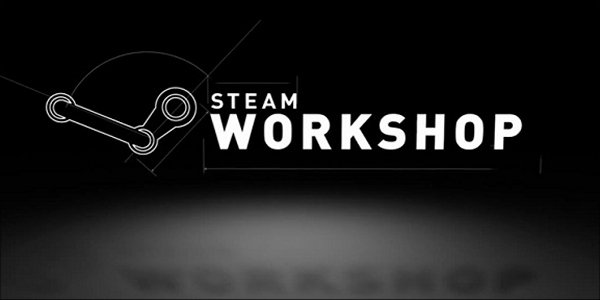Why People Love Valve And Steam? Ten Simple Reasons

There are a lot of comparisons out there between digital distributors on PC and marketplaces on other platforms. We often hear that just because someone has a digital distribution platform it's “just like Steam”. However, that's not always true and there's a reason why people have grown to like and even love Steam, as well as Valve, the private company that operates the service. Here are some of the basic reasons why people have fallen in love with Jedi Master Gaben and the Steam-powered network.

No. 1: Offline Mode
While a lot of people seem to think that in order to play any of your games in Steam you have to be online, this is totally not true. So long as you're not trying to play an MMO, just about every game in your library already downloaded, installed and run at least once, is available in offline mode. You can even have Steam start in offline mode whenever you boot it up and it can stay that way indefinitely. Now, historically the offline mode for Steam was grade-A crap. Offline mode was previously difficult to get working correctly or stable – there were times when you would go into offline mode, exit Steam and re-enter and it would put you back in online mode. However, with some tweaks and modifications, Valve has made offline mode convenient enough so that if you don't want to always be online, you don't have to. It's like gaming in 1996 but without the crappy 28.8 modems. You got a problem with that Mr. Always-Online Adam Orth? #Dealwithit.

No. 2: Free-to-Use Service
While this seems like a “no duh” kind of thing, let's consider that not every service is or was free-to-use. Back before digital distribution was big in the 2000s, we had to deal with paid services like the very first iteration of Xbox Live known as the Microsoft Gaming Zone, which hosted some games for free but then eventually had a charge to access a larger library of games and features. There was also Mplayer, TEN and online services from Sierra affiliates, such as the briefly lived AT&T gaming service for online games. Being able to register, download and use Steam without paying a cent is a great thing, as we sometimes take features like this for granted, because there was a time when simply accessing digital distribution platforms required a few hoops to hop through in order to make full use of their services. Opening Steam up to any and everyone with no financial strings attached is a real breath of fresh air.

No. 3: Automatic Patching
With new beta programs like Steam Pipe and automatic patching updates made available for every game in the Steam library, what's not to love about this feature? Well, technically for things like Garry's Mod or Half-Life, the frequent and uncontrollable updates can sometimes break the game, and given that turning off automatic updates doesn't always work as intended, it can create a bit of headache. Still, for the vast majority of games across Steam's library of available software titles, the automatic update patching keeps titles running clean and pristine. Back in the day if a game didn't work right or required a patch you would have to go through the trouble of visiting the publisher/developer's website and manually downloading the patch and then sometimes you would have to do some file-Tetris and rearrange certain key files or replace some files but leave others alone, etc., etc. In other words, patching PC games back in the day used to be a pain and Steam takes that pain away.
Your Daily Blend of Entertainment News

No. 4: Steam Greenlight
There is a small group of gamers and developers who complain about Steam's Greenlight process, but I have to say that this is the best thing made available for the vast array of incalculably good and bad indie games out there. Allowing gamers to vote for the games they want to buy and play only makes sense, as opposed to relegating all non-publisher indie titles to a back-corner section on the service like the Xbox Live Indie Games channel, or keeping a lot of these titles buried like the Nintendo eShop, the Greenlight really does bring a democratic meritocracy to the whole indie community because games people want to play can be voted for by people who want to play them. While there are complaints about the search and filter options (complaints I wholeheartedly agree with), Valve is still working out the kinks and aiming to make the service better. Besides, without Greenlight we wouldn't have awesome games like Vector, Surgeon Simulator or McPixel available to a broad audience. It's not like any of those games would have been picked up and published by EA, Microsoft or Activision.

No. 5: Steam Workshop
In addition to giving indies an outlet to get their games out there with Greenlight (which otherwise never would have seen the light of day on Steam), Valve also broke ground and incorporated one of the coolest modding resources on the net alongside ModDB and it's called the Steam Workshop. This web-based software tool shed enables gamers, developers, modders and tinkerers alike to create, modify and upload their creations for Workshop-compatible games and share those creations and mods with everyone. This here is part of the lifeblood of the growing community and gamer dedication to the pro-consumer Valve machine. Instead of milking gamers with what could have been a DLC shop, Valve opted instead to promote content through the Workshop that allows gamers to experience new ways to play their favorite games, including new maps, new game modes, new enemies, new weapons, new items, new quests and new ways to share experiences and creative ideas. While a lot of people like to draw comparisons to other digital distribution portals and Steam, the fact that other competitors lack a mod workshop speaks volumes for Valve's dedication to the actual gaming community and growing that community beyond the simple attempt to use a service to reach into the pockets of gamers.

No. 6: Lots Of Support For Content Creators
Tying in nicely with the previous point, there is a lot of support for content creators without worrying about legal barriers and blockades. One of the main reasons Capcom supposedly doesn't officially support mods is because of legal barriers and resource management. Valve, on the other hand, encourages gamers to step out of the box and encourages content creators to experiment with the Source Engine and publicly available tools. This, again, helps to expand a game's community and the market valuation of said title. That's also not to mention that it creates an indefinite tail-end for a game so long as content creators continue to pump out fresh new content for the game (i.e., Half-life, Garry's Mod and Portal). This is further evidence with Valve's open monetization program to help content creators and modders make some extra cash, as reported by Wired. When was the last time EA, Ubisoft or Microsoft setup a program to help modders make some dollar-dollar bills off their contributions to a game? Heck, when was the last time any of those three supported open modding for their games?

No. 7: Promotion Of Total Conversions/Remakes
This here also ties into the above two points, as it's another sign of the company promoting the growth of the industry as opposed to stomping it out like a day old camp fire. While companies like Square Enix, Activision and Warner Bros are keen on sending out cease and desist letters, Valve does just the opposite, encouraging gamers, tinkerers, modders and designers to take that long road down the pathway of software exploration, so much so that the team that remade the original Half-Life into a total conversion called Black Mesa received Valve's blessing and even managed to get approved on Steam's Greenlight. Additional expansions, mods and total conversions of Valve's own software has usually been met with a lot of support in the modding community, which is how things like Dota, Counter-Strike, Team Fortress and Dear Esther became real games all their own. It's literally the total opposite of when modding was available in earlier Battlefield titles but then was blockaded off in order for the publisher to sell similar mods as DLC.

No. 8: Third-Party Distribution Support
In case you didn't know, you can actually purchase a lot of games from other third-party software distributors and use the keys to activate the games on Steam. Despite being in competition with companies like Good Old Games, Green Man Gaming, Amazon, Desura and Indie Gala, it's actually possible to buy games from some of these alternative outlets (even for a cheaper price than what the game is available for on Steam) and then activate the game on Steam. While a lot of comparisons are made between Steam, PSN and Xbox Live, there is a pretty big difference between the services since there is no other way to get digital games for closed-console platforms aside from first-party portals. It also means that there is no third-party digital distribution support for consoles, which ultimately limits competitive pricing and axes out any way to get discounts other than what's provided by the manufacturers. Simply put, this feature alone kind of makes Steam kick a lot of other services in the nuts.

No. 9: Big Picture Mode
This here is probably one of the most understated modes available for Steam. Big Picture Mode removes all the PC-centric windows and navigation and basically turns Steam into an Xbox Live-looking dashboard except without any of those annoying ads and no promotions from Doritos and Mountain Dew. The only thing you get in Big Picture Mode are the games you play, the games you want to play and the games you can buy. It's simple yet effective and designed for couch-gamers who prefer using a controller to navigate the menus and dashboard... yep, just plug in any USB compatible controller and say goodbye to the keyboard and mouse. This also effectively removes that urban legend hanging over the PC platform that labels it as a confusing to use and cumbersome device, relegated only for man-nerds and girl-geeks. Now, with Big Picture Mode, even dude-bros, grannies and Wii owners can game on the PC with ease.

No. 10: Steam Holiday Sales
Well, this is obviously the best part about Steam. Even though all those other features are great and Valve has really helped turn Steam from a steaming pile of dung (primarily during the mid 2000s) with some streamlined updates and upgrades, the one thing that helps Steam stand apart from all the competition are the holiday sales. You can get just about any and every game for an even cheaper price than what they're usually available for. The summer and winter sales are like a holiday in themselves because you can stockpile games and have more to play than what you're even capable of playing. It's great and only the Humble Indie Bundle seems to rival Steam in regards to pricing. Will we ever see these kind of sales on consoles? Pfft, unlikely.
Also – as an extra side-note and something many gamers probably didn't know about – you can play a single game across multiple computers from a single account. I thought this should be tossed in there for good measure, because so long as you log in and go into offline mode you can get in some good 'ole fashioned LAN-style gaming sessions with a single copy of a game (so long as it doesn't have its own form of additional DRM authentication). Family sharing? It's already a part of Steam.
TL;DR: Valve is doing everything right with Steam that many other companies are doing wrong with their services
Staff Writer at CinemaBlend.

